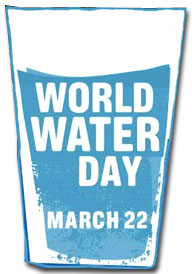By Steve Shimek
After three years of delays, the Central Coast Regional Water Quality Control Board passed first-of-its-kind regulation of agricultural pollution. The Otter Project led a broad coalition of conservation, environmental justice and water policy groups to the huge success.

Runoff from farmland near the Santa Maria River drains from ditches to the river.
Years of full-time effort; scores of meetings; trips to the Governor’s Office; visits with legislators; building of a broad-based coalition; three administrative appeals and one lawsuit brought us to the finish line. As with all major efforts, hundreds of people were involved, but it was The Otter Project who led and organized.
Irrigated agriculture is exempt from compliance with the federal Clean Water Act. This blanket exemption has led to widespread agricultural pollution across America including “dead zones” offshore of major rivers on every coast. Irrigated agriculture is not, however, exempt from California’s Porter-Cologne Water Quality Act. It was under this State legislation that The Otter Project worked.
In California, the Regional Water Quality Control Boards have the authority to implement water quality regulations. In 2008 the Central Coast Water Board invited The Otter Project to participate in a stakeholder group to help draft new regulations for agricultural pollution. At that time we had no idea that the draft policy supported by The Otter Project would become what may be the strictest oversight of agricultural discharges in the country. Big-Ag’s lawyers and lobbyists flooded the Central Coast to try to beat back the proposed regulation.
On March 15th, nearly three years after beginning the process, the Central Coast Regional Water Quality Control Board, on a unanimous 6-0 vote, passed the bulk of those strict regulations- calling for the elimination of toxic discharges within five years and the immediate reduction of nutrient pollution to surface and ground waters.
The pollution flowing from farm field to river to ocean is having an impact on our otters; to improve the health of sea otters we need to reduce agricultural pollution.
- Farm fertilizers cause blooms of toxic algae like microcystis. In just the past few years 21 sea otters have died of microcystis poisoning in Monterey Bay.
- Twenty-two percent of the Central Coast’s inland waters are “highly toxic” and heavily polluted with agricultural pesticides. The worst of the worst – the Salinas and Santa Maria rivers – drain into the heart of the otters’ range.
- DDT is a persistent legacy chemical that was banned decades ago but is found in sea otter tissues in concentrations that could cause immune system suppression. DDT adheres to sediment particles and becomes mobilized when poor soil management practices allow sediments to erode.
The heavily polluted water of the Central Coast is not just a problem for sea otters. Millions of salmon and steelhead once populated these rivers. Today they are all but extinct. Rural households and farmworker communities depend upon well water from the lower Salinas aquifer which is heavily polluted with nitrates. Infants can die from drinking nitrate polluted water. High nitrates have also been linked to cancer. The California State Water Resources Control Board estimates that the health of over a hundred thousand people in Monterey County is threatened by agricultural pollution. Otters, fish, and people – it’s all connected.
The passage of the new regulations in mid-March will not be the last word. We expect Big-Ag’s lawyers will file an administrative appeal to the new regulations. They will likely request a “stay” to prevent the new regulations from going into effect. We must remain vigilant to ensure the restoration of the watershed to a level that will support the health of people and otters alike.
The Otter Project will continue to be there every step of the way to ensure sea otters, people, and the environment are protected. We believe agriculture has every right to use the water but does not have the right to return the water toxic to other users and the environment. We ALL have the right to a healthy watershed. Water is too precious to waste.
~~~~~~~~~~~~~~~~~~~~~~~~~~~~~~~~~~~~~~~~~~~~~~~~~~~~~~~~~~~~~~~~
No one else takes on Big Oil, Big Ag, City, State, and Federal agencies in the same way that we do. We use the whole “tool-box” at our disposal—something a lot of small environmental groups will not do. These activities are not funded by grants. In fact, we do the bulk of our otter advocacy based upon grassroots support. It is gifts like yours today that keep The Otter Project afloat.
We need your help to hold the ground we’ve made for otters; To keep improving the water quality in our rivers to protect the otters’ health; To fight flawed legislation like HR 4043 which would keep the failed “No-Otter” Zone in place forever; To continue monitoring the Marine Protected Areas that are the habitat otters rely on; And to continue fighting the expansion of Big Oil in California and coordinating Oil Spill Response workshops in the case of a spill.
Otters have a lot of very rich and powerful foes with lawyers and lobbyists in the state capitol and in Washington DC. It is up to us, the members of The Otter Project, to stand up to those corporate bullies and defend these charismatic little guys. Together we can do it!
Thank you so much for your support today!

 MONTEREY, CA – On July 4th, 2012, a milestone of 2000 surveys monitoring California’s Marine Protected Areas (MPA) was reached by volunteers with The Otter Project’s Central Coast MPA Watch program.
MONTEREY, CA – On July 4th, 2012, a milestone of 2000 surveys monitoring California’s Marine Protected Areas (MPA) was reached by volunteers with The Otter Project’s Central Coast MPA Watch program.











 March 22nd gives us time to stop and reflect on one of the most important issues facing humanity in the 21st century—water and how we manage it.
March 22nd gives us time to stop and reflect on one of the most important issues facing humanity in the 21st century—water and how we manage it.